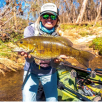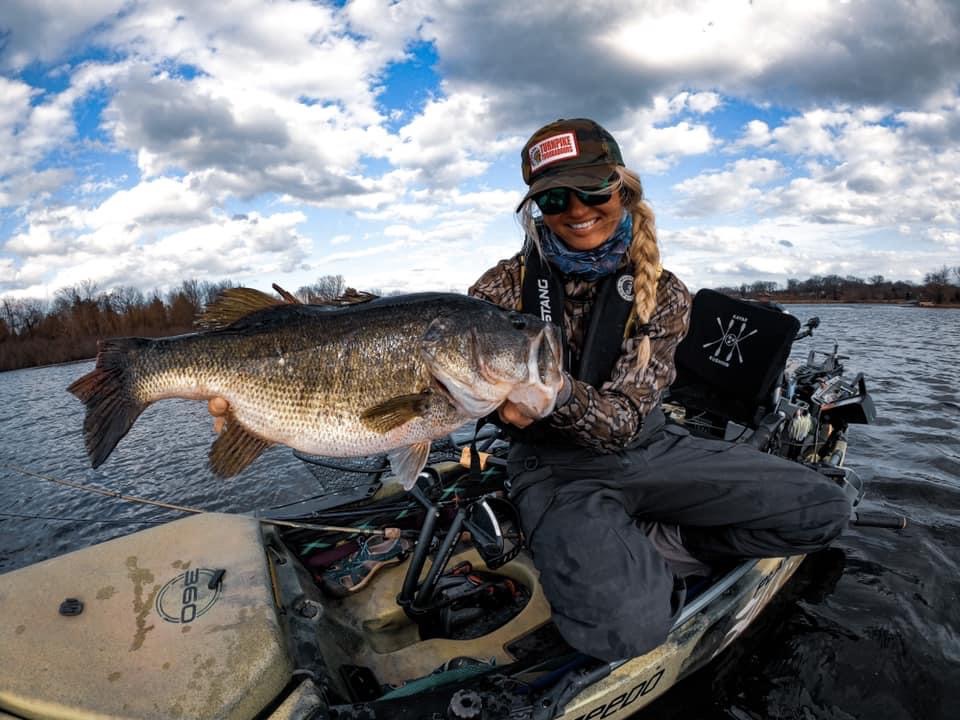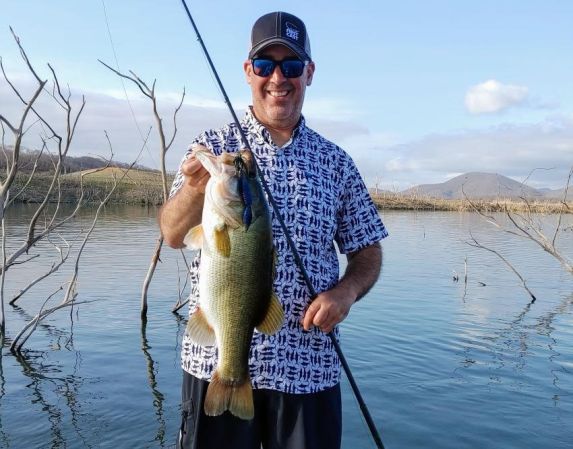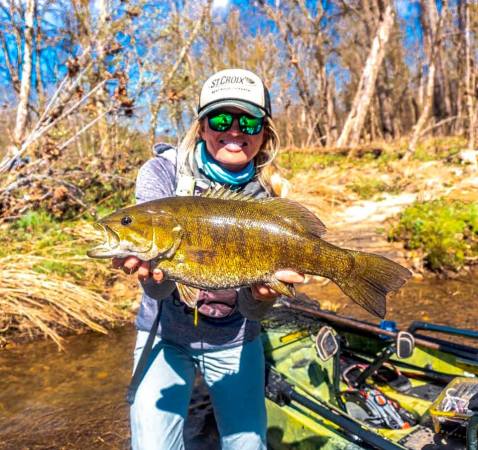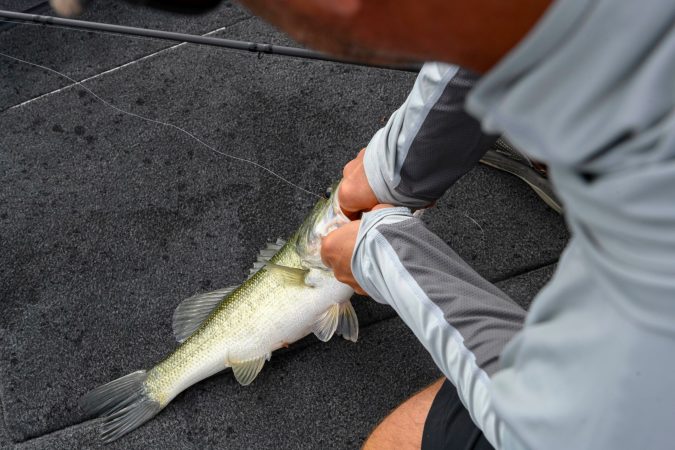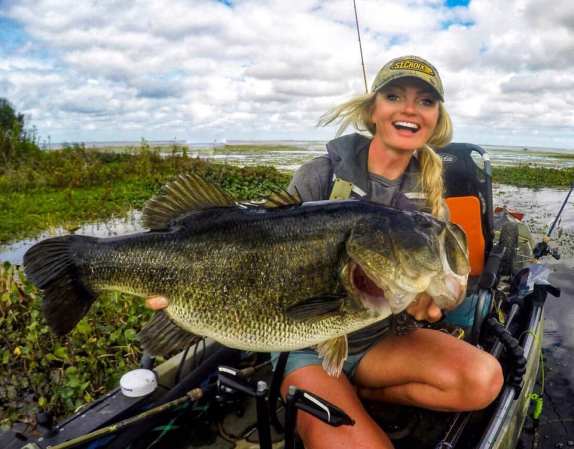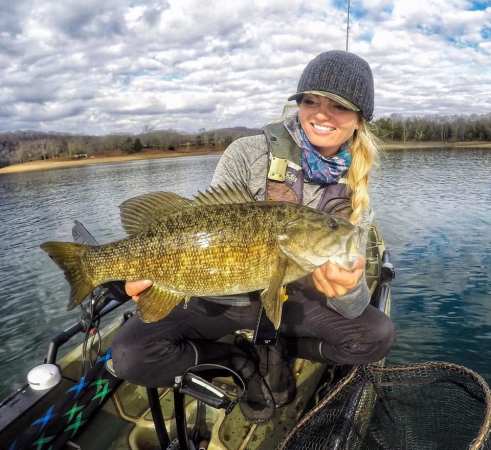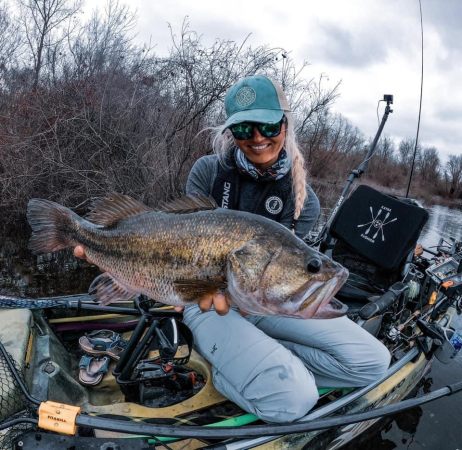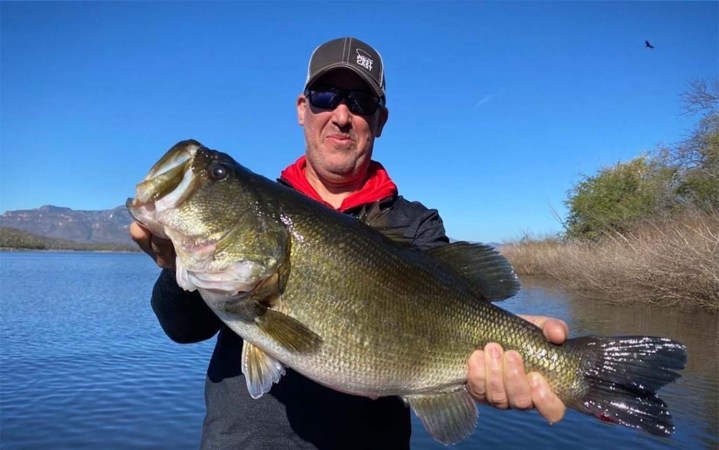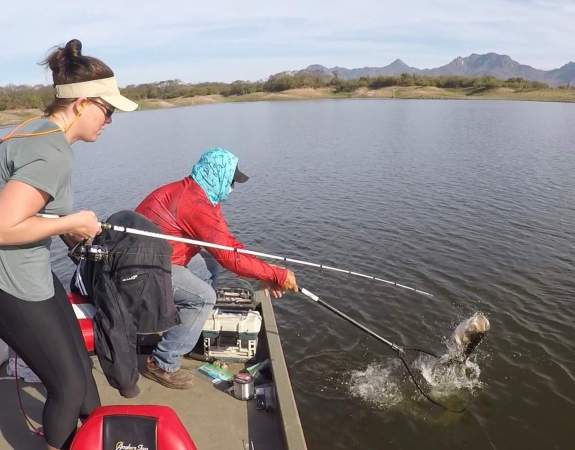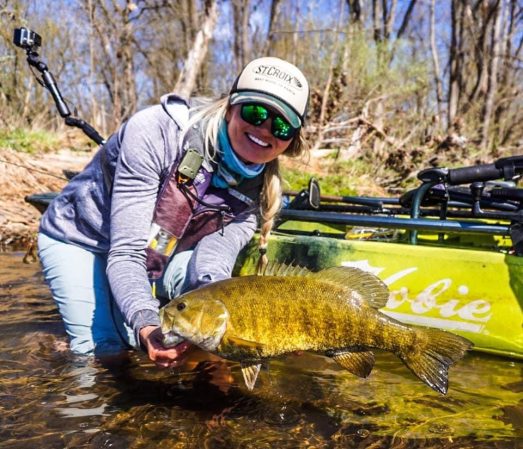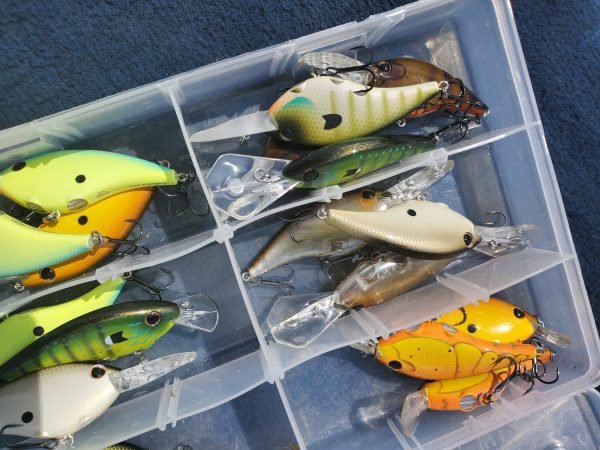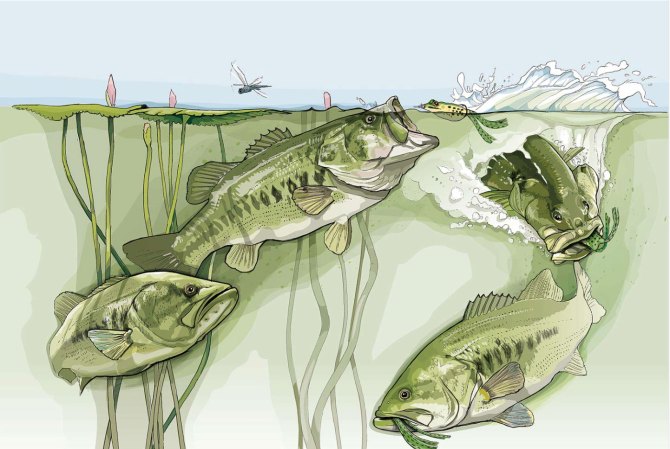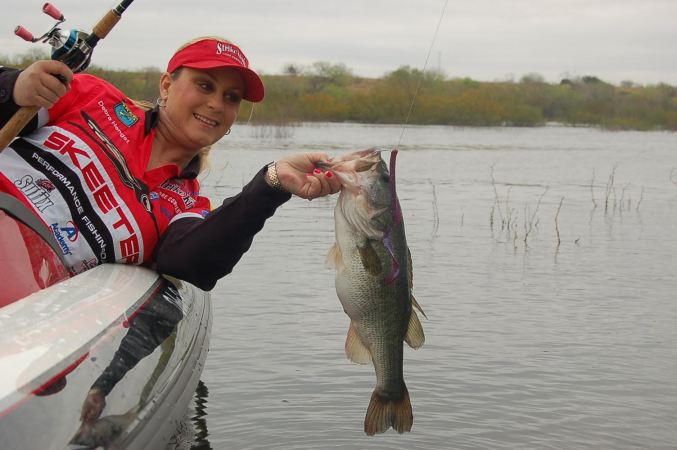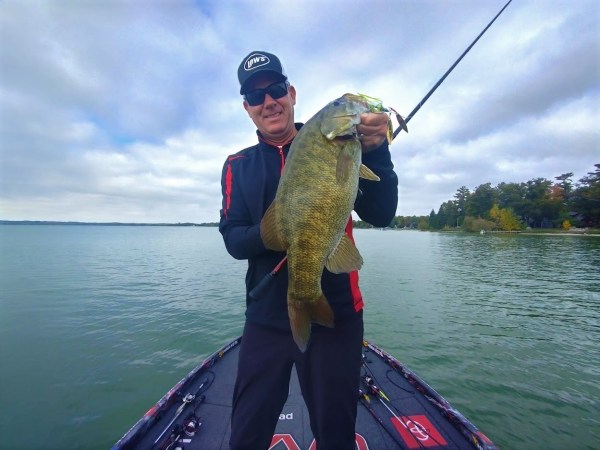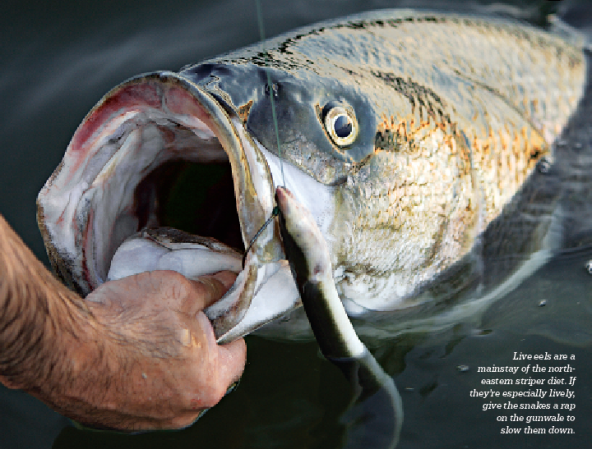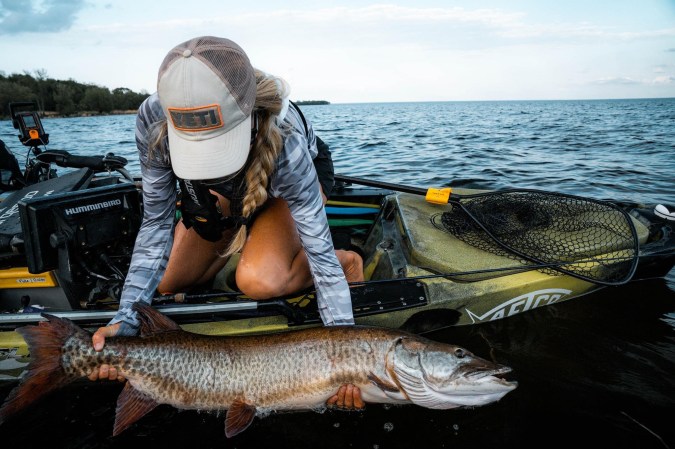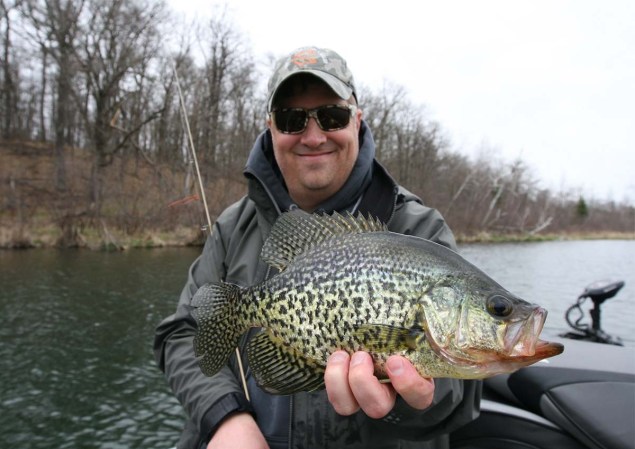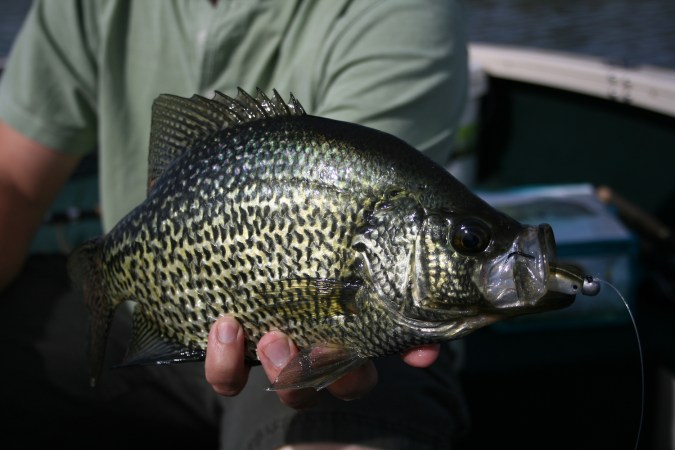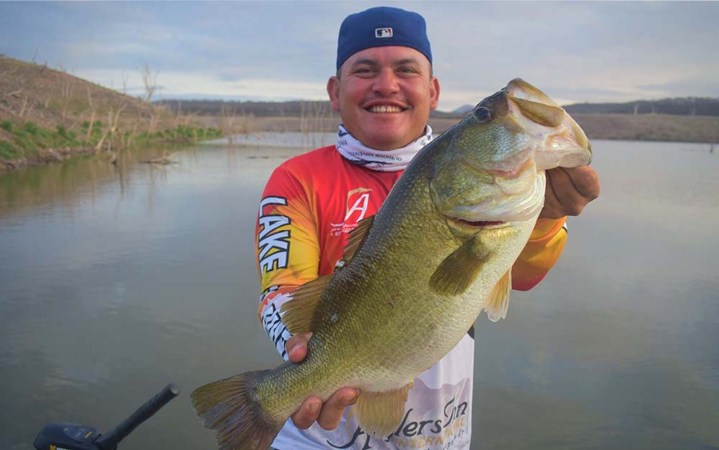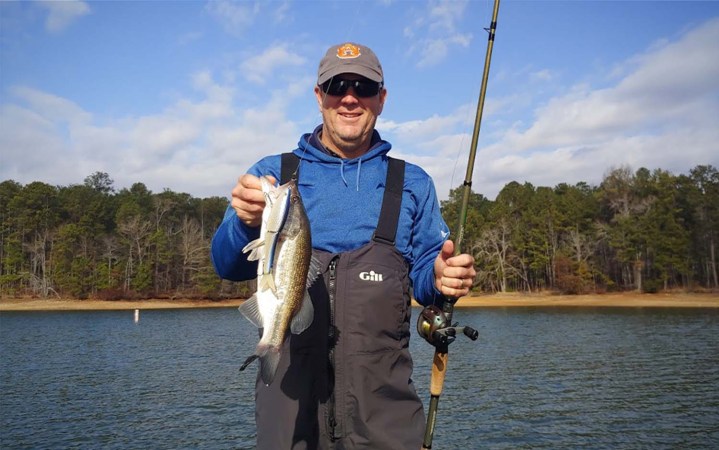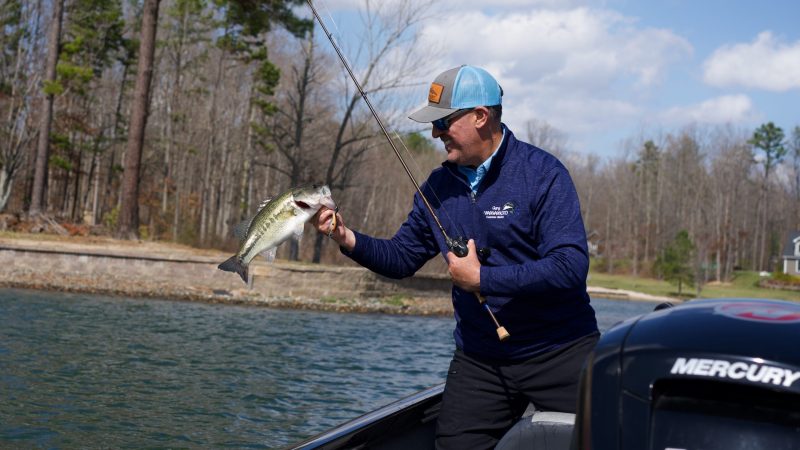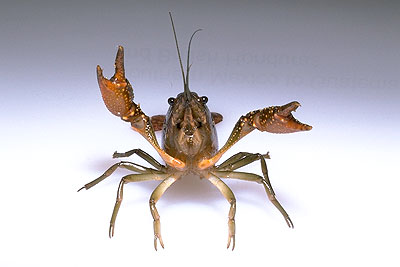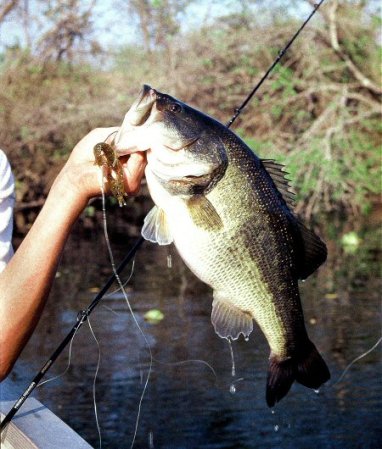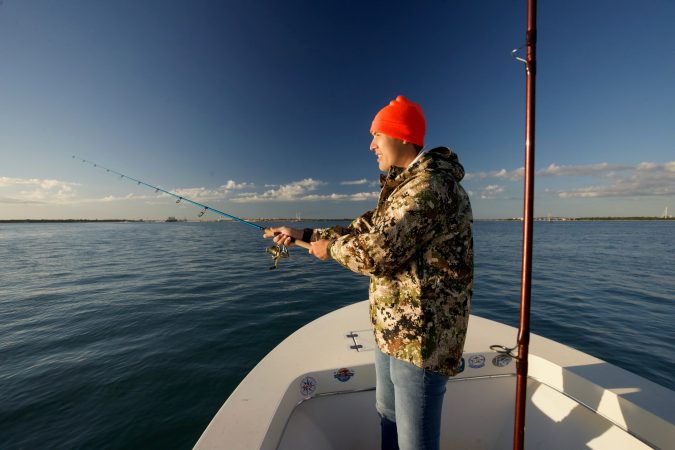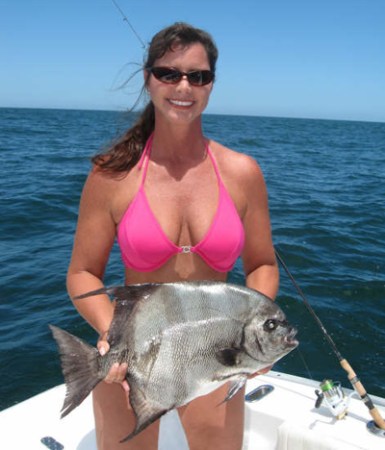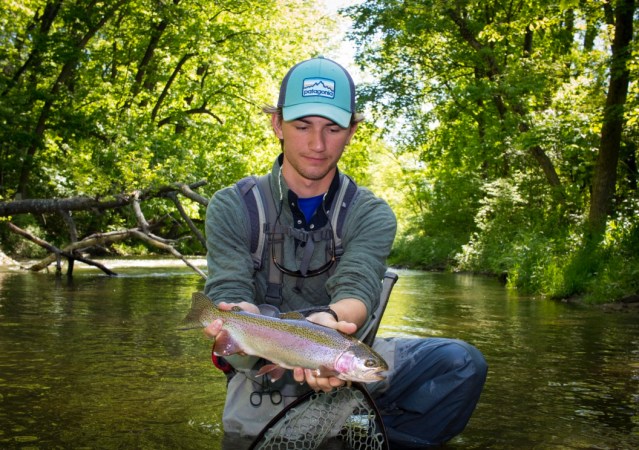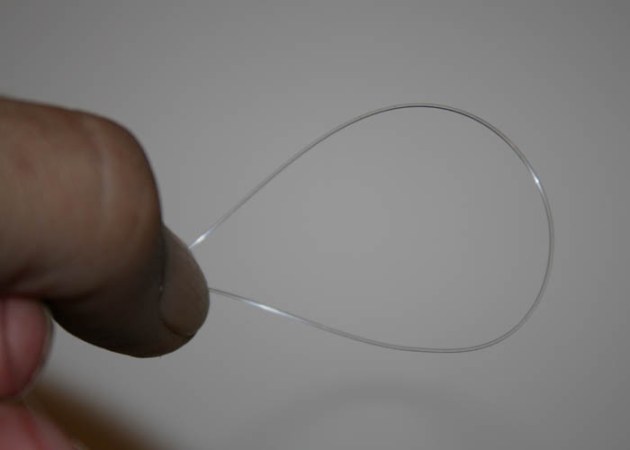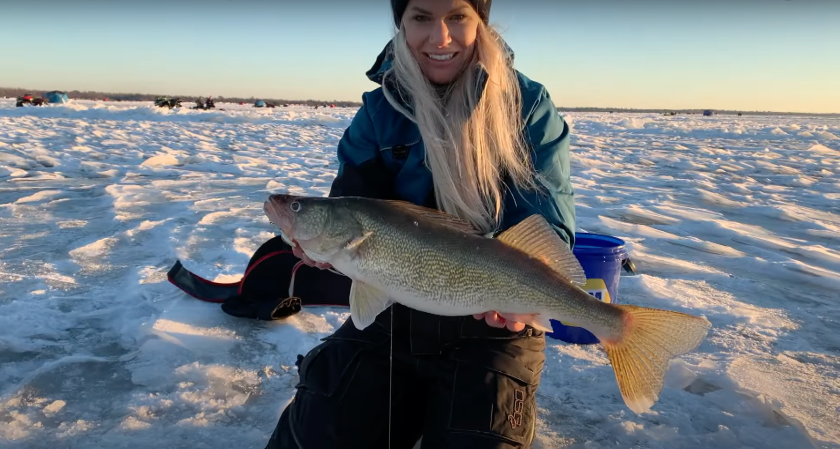We may earn revenue from the products available on this page and participate in affiliate programs. Learn More ›
You won’t often see a spinning rod on boat decks down in the hydrilla-clad lakes of Florida or the timber-lined shores of Lake Fork in Texas. Anglers who fish these two bass-rich locales are typically pounding hard with baitcasters, trying to get a trophy largemouth to rise from thick cover and devour a top water or spinner bait.
There are certain situations, however, like getting under low-hanging tree branches or making a cast in a tight window, where a spinning rod is a better option than a baitcaster. Here’s how I use a spinning rod—and which baits are best—to finesses more bass into the boat.
A Lighter Rod Makes It Easier to Feel the Bite
Most anglers know that fishing can get tough as weather patterns change—a post frontal or cold front can shut down a hot bite. Heavy pressure can also cause bass become bait-shy. In these cases, I like to downsize and take a finesse approach to try to entice finicky bass to bite. This is where a spinning-rod can shine. Spinning rods allow anglers to cast lighter baits further and more accurately. By lighter baits, I mean 3/16 ounces and lower. Weightless plastics, flukes, small top waters, SR5s, and finesse jigs are all great options.
You’re also going to gain sensitivity when using a spinning rod, which increases your chances of detecting ultra-light bites. This is why you might see an angler fishing a wacky rig on a spinning rod around pads and brush; they might need that extra sensitivity to pick up on a fickle bite. And if you don’t have a ton of experience trying to catch pressured bass that aren’t gulping down your bait, a spinning rod is the way to go.
How to Rig a Spinner for Heavy Cover
I don’t recommend taking your normal 610MLXF rod with a drop shot or wacky rig set up to a lake like O.H. Ivie in Texas or Kissimmee in Florida, both of which have notoriously thick cover. When fishing around the heavy stuff, it’s imperative that you “beef up” your rigging if you want to avoid missing bites.
First, you want to go up on your line. For example, on Lake Fork, guides typically won’t fish with less than a 15-pound leader for their drop shot set-ups. A typical drop shot leader ranges from 6- to 10-pound test. Using heavier line is going to allow you to set your drag a little tighter to get those fish up and away from structure or grass. One thing to keep in mind: The heavier the line, the less sensitivity you will have when a bass bites. I usually use a 20-pound braided main line, and no more than a 17-pound leader when fishing spinning gear around cover.
You will also want to step up to a medium heavy (MH) spinning rod, which gives you more backbone and more control to handle big bass when they bury in the grass or submerged timber. For fishing around heavy cover, I like a 7-foot or a 7-foot, 3-inch MH rod. This gives me extra power to increase my chances of getting fish out and away from cover. For the reel, I use a standard 2500. I might beef up the main line braid to 15 or 20 pounds at most, and if I’m able to get away with it, I’ll tie directly to the braid and avoid using a leader. You can do this when fish aren’t as line shy.

Skipping for Big Bass
At times casting to a spot where you know there are bass with a baitcaster can be tough or impossible. Last spring, I was fishing Lake Fork and ran into such a conundrum. The fish were bedding way back behind the brush, and I wasn’t able to make good enough casts with my baitcaster and a weightless fluke. With a 70MH spinning rod, I was able to make accurate, long skips under the branches, and this helped me land a few bass. I was risking losing my bait or, at the very lease getting it caught in the branches, but it paid off as you will see in the YouTube video above.
